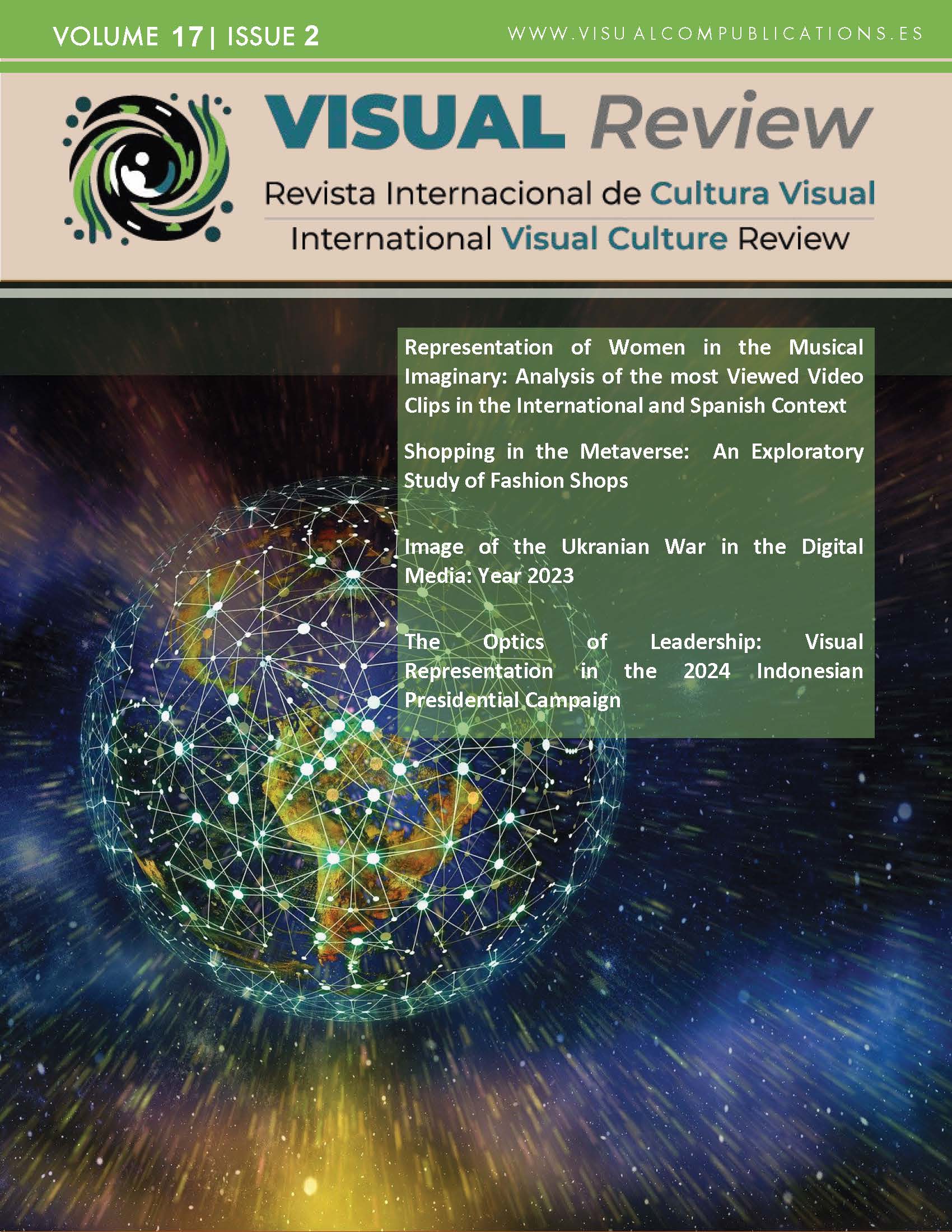Visual Narratives of Crime on Instagram
Storytelling Strategies of the Main Chilean TV Channels in 2023-2024
DOI:
https://doi.org/10.62161/revvisual.v17.5760Keywords:
Visual narratives, Crimes, Instagram, Media, Interaction, Polarization, StorytellingAbstract
This research analyses the visual narratives and storytelling strategies in crime-related posts on Instagram by Chile’s major free-to-air television media outlets (2023–2024). Employing a mixed-methods approach, it examines framing, visual formats, levels of interaction, and narrative tone. The findings reveal a tension between the need to inform and attract audiences, underscoring the impact of sensationalism, emotionality, and virality on crime perception. The study discusses how media practices in constructing criminal narratives pose challenges to the ethical and social implications of the media.
Downloads
Global Statistics ℹ️
|
823
Views
|
654
Downloads
|
|
1477
Total
|
|
References
Alonso-Muñoz, L. (2023). X/Twitter: ¿espacio para la deliberación o para la desinformación?. Anuario ThinkEPI, 18. https://doi.org/10.3145/thinkepi.2024.e18a39 DOI: https://doi.org/10.3145/thinkepi.2024.e18a39
Becker, H. (1967). Whose side are we on? Social Problems, 14(3), 239–247. https://doi.org/10.2307/799147 DOI: https://doi.org/10.1525/sp.1967.14.3.03a00010
Blackstone, W. (1967). Commentaries on the Laws of England. Oxford: Clarendon Press.
Bryman, A. (2012). Social Research Methods (4ta ed.). Oxford University Press.
Chomsky, N., & Herman, E. S. (2002). Manufacturing consent: The political economy of the mass media. Pantheon Books.
Chouliaraki, L., & Orgad, S. (2011). Proper distance: Mediation, ethics, otherness. International Journal of Cultural Studies, 14(4), 341–356. https://doi.org/10.1177/1367877910391867 DOI: https://doi.org/10.1177/1367877911403245
Couldry, N. (2012). Media, society, world: Social theory and digital media practice. Polity Press.
Creswell, J. W. (2013). Research design: Qualitative, quantitative, and mixed methods approaches (4ª ed.). Sage Publications.
Cummings, J. J., Tsay-Vogel, M., & Cahill, T. J. (2022). Effects of immersive storytelling on affective, cognitive, and associative empathy: The mediating role of presence. New Media & Society. https://doi.org/10.1177/1461444820986816 DOI: https://doi.org/10.1177/1461444820986816
De Fina, A. (2016). Storytelling and audience reactions in social media. Language in Society, 45(4), 473–498. https://doi.org/10.1017/S0047404516000051 DOI: https://doi.org/10.1017/S0047404516000051
Debord, G. ([1967] 1999). La sociedad del espectáculo (A. García, Trad.). Ediciones Naufragio.
Entman, R. M. (1993). Framing: Toward clarification of a fractured paradigm. Journal of Communication, 43(4), 51–58. https://doi.org/10.1111/j.1460-2466.1993.tb01304.x DOI: https://doi.org/10.1111/j.1460-2466.1993.tb01304.x
Erazo-Patiño, L. A., Laverde-Rodríguez, C. A., & Devia-Acevedo, E. D. (2024). Medios digitales y percepción de la violencia: Un análisis de la expansión del Tren de Aragua. Revista Científica General José María Córdova, 22(46), 457–482. https://doi.org/10.21830/19006586.1287 DOI: https://doi.org/10.21830/19006586.1287
Escalas, J. E. (2004). Imagine yourself in the product: Mental simulation, narrative transportation, and persuasion. Journal of Advertising, 33(2), 37–48. https://doi.org/10.1080/00913367.2004.10639163 DOI: https://doi.org/10.1080/00913367.2004.10639163
Fiske, J. (1993). Power plays, power works. Verso.
Frosh, P. (2002). Rhetorics of the overlooked: On the communicative modes of stock advertising images. Journal of Consumer Culture, 2(2), 171–196. DOI: https://doi.org/10.1177/146954050200200202
Frosh, P. (2018). The mouse, the screen and the Holocaust witness: Interface aesthetics and moral response. New Media & Society, 20(1), 351–368. https://doi.org/10.1177/1461444816663480 DOI: https://doi.org/10.1177/1461444816663480
Garland, D. (2002). The culture of control: Crime and social order in contemporary society. Oxford University Press. DOI: https://doi.org/10.1093/acprof:oso/9780199258024.001.0001
Georgakopoulou, A. (2021). Small stories as curated formats on social media: The intersection of affordances, values & practices. System, 104, 102620. https://doi.org/10.1016/j.system.2021.102620 DOI: https://doi.org/10.1016/j.system.2021.102620
Gibbs, G. R. (2018). Analyzing qualitative data (2ª ed.). Sage Publications. DOI: https://doi.org/10.4135/9781526441867
Gibbs, M., Meese, J., Arnold, M., Nansen, B., & Carter, M. (2015). #Funeral and Instagram: Death, social media, and platform vernacular. Information, Communication & Society, 18(3), 255–268. https://doi.org/10.1080/1369118X.2014.987152 DOI: https://doi.org/10.1080/1369118X.2014.987152
Gomes, S., Sardá, T., & Granja, R. (2022). Crime, justice and media: Debating (mis)representations and renewed challenges. Cadernos de Segurança Pública. Recuperado de https://journals.openedition.org/cs/7914 DOI: https://doi.org/10.17231/comsoc.42(2022).4467
González, F. (2020). Tenencia y porte ilegales de armas de fuego y municiones en el derecho penal chileno. Revista de Derecho, 31(2), 729–746. https://doi.org/10.4067/S0718-33992020000200729 DOI: https://doi.org/10.4067/S0718-33992020000200729
Greer, C., & Reiner, R. (2012). Mediated mayhem: Media, crime, criminal justice. In M. Maguire, R. Morgan, & R. Reiner (Eds.), The Oxford handbook of criminology (5ª ed.). Oxford University Press. DOI: https://doi.org/10.1093/he/9780199590278.003.0009
Hand, M. (2012). Ubiquitous photography. Polity Press.
Hernández, R., Fernández, C., & Baptista, P. (2014). Metodología de la investigación (6ª ed.). McGraw-Hill Education.
Highfield, T., & Leaver, T. (2016). Instagrammatics and digital methods: Studying visual social media, from selfies and GIFs to memes and emoji. Communication Research and Practice, 2(1), 47-62. DOI:10.1080/22041451.2016.1155332 DOI: https://doi.org/10.1080/22041451.2016.1155332
Higgins, K. C. (2024). Rethinking visual criminalization: News images and the mediated spacetime of crime events. Crime, Media, Culture. https://doi.org/10.1177/14703572221102547 DOI: https://doi.org/10.1177/14703572221102547
Hyvönen, M., Karlsson, M., & Eriksson, M. (2020). The politics of true crime: Vulnerability and documentaries on murder in Swedish public service radio's P3 documentary. En A. M. Dancus et al. (Eds.), Vulnerability in Scandinavian art and culture (pp. 291-310). Springer. https://doi.org/10.1007/978-3-030-37382-5_14 DOI: https://doi.org/10.1007/978-3-030-37382-5_14
Jansson, A. (2017). Mediatization and mobile lives: A critical approach. Routledge. DOI: https://doi.org/10.4324/9781315192871
Jenkins, H. (2006). Convergence culture: Where old and new media collide. New York University Press.
Jewkes, Y. (2015). Media and crime (3ª ed.). Sage Publications.
Kerlinger, F. N., & Lee, H. B. (2002). Foundations of behavioral research (4ª ed.). Wadsworth.
Kitzinger, J. (2000). Media templates: Patterns of association and the (re)construction of meaning over time. Media, Culture & Society, 22(1), 61–84. DOI: https://doi.org/10.1177/016344300022001004
Kress, G., & Van Leeuwen, T. (2006). Reading images: The grammar of visual design (2ª ed.). Routledge. DOI: https://doi.org/10.4324/9780203619728
Krippendorff, K. (2018). Content analysis: An introduction to its methodology (4ª ed.). Sage Publications. DOI: https://doi.org/10.4135/9781071878781
Lim, H., & Childs, M. (2020). Visual storytelling on Instagram: Branded photo narrative and the role of telepresence. Journal of Research in Interactive Marketing, 14(1), 33–50. https://doi.org/10.1108/JRIM-09-2018-0115 DOI: https://doi.org/10.1108/JRIM-09-2018-0115
Lister, M., Dovey, J., Giddings, S., Grant, I., & Kelly, K. (2009). New media: A critical introduction. Routledge. DOI: https://doi.org/10.4324/9780203884829
Marwick, A. E. (2015). Instafame: Luxury selfies in the attention economy. Public Culture, 27(1), 137–160. https://doi.org/10.1215/08992363-2797136 DOI: https://doi.org/10.1215/08992363-2798379
Marwick, A. E., & Boyd, D. (2011). I tweet honestly, I tweet passionately: Twitter users, context collapse, and the imagined audience. New Media & Society, 13(1), 114–133. https://doi.org/10.1177/1461444810365313 DOI: https://doi.org/10.1177/1461444810365313
Mitchell, W. J. T. (2002). The reconfigured eye: Visual truth in the post-photographic era. MIT Press.
Murthy, D., Gross, A., & McGarry, M. (2016). Visual social media and big data: Interpreting Instagram images posted on Twitter. Digital Culture & Society, 2(2), 113–133. https://doi.org/10.25969/mediarep/1027 DOI: https://doi.org/10.14361/dcs-2016-0208
Neumayer, C., & Rossi, L. (2018). Images of protest in social media: Struggle over visibility and visual narratives. New Media & Society, 20(11), 4293–4310. https://doi.org/10.1177/1461444818770602 DOI: https://doi.org/10.1177/1461444818770602
Nichols, B. (2016). Speaking truths with film: Evidence, ethics, politics in documentary. University of California Press. DOI: https://doi.org/10.1525/9780520964587
Nilsson, L. (2021). The portrayal of crime: Printed news media’s representation of crime in Malmö. DiVA Portal. Recuperado de https://www.diva-portal.org/smash/record.jsf?pid=diva2:1589850
Nunnally, J. C., & Bernstein, I. H. (1994). Psychometric theory (3ª ed.). McGraw-Hill.
Papacharissi, Z. (2015). Affective publics: Sentiment, technology, and politics. Oxford University Press. https://doi.org/10.1093/acprof:oso/9780190212892.001.0001 DOI: https://doi.org/10.1093/acprof:oso/9780199999736.001.0001
Rafiee, A., Spooren, W., & Sanders, J. (2022). Framing similar issues differently: A cross-cultural discourse analysis of news images. Social Semiotics. https://doi.org/10.1080/10350330.2021.1900719 DOI: https://doi.org/10.1080/10350330.2021.1900719
Ristić, K. (2020). Re-enacting the past in TV news on war crime trials: A method for analysis of visual narratives in archival footage. Journal of Media Practice, 21(1), 19–37. https://doi.org/10.1177/1750635219846857 DOI: https://doi.org/10.1177/1750635219846857
Steuer, J. (1992). Defining virtual reality: Dimensions determining telepresence. Journal of Communication, 42(4), 73–93. https://doi.org/10.1111/j.1460-2466.1992.tb00812.x DOI: https://doi.org/10.1111/j.1460-2466.1992.tb00812.x
Thompson, P. (2018). Media representations of crime: A critical introduction. Routledge.
Van Dijck, J. (2013). The culture of connectivity: A critical history of social media. Oxford University Press. https://doi.org/10.1093/acprof:oso/9780199970773.001.0001 DOI: https://doi.org/10.1093/acprof:oso/9780199970773.001.0001
Wahl-Jorgensen, K. (2019). Emotions, media and politics. Polity Press.
Zelizer, B. (2010). About to die: How news images move the public. Oxford University Press.
Downloads
Published
How to Cite
Issue
Section
License
Copyright (c) 2025 VISUAL REVIEW. International Visual Culture Review / Revista Internacional de Cultura Visual

This work is licensed under a Creative Commons Attribution-NoDerivatives 4.0 International License.
Those authors who publish in this journal accept the following terms:
-
Authors retain copyright.
-
Authors transfer to the journal the right of first publication. The journal also owns the publishing rights.
-
All published contents are governed by an Attribution-NoDerivatives 4.0 International License.
Access the informative version and legal text of the license. By virtue of this, third parties are allowed to use what is published as long as they mention the authorship of the work and the first publication in this journal. If you transform the material, you may not distribute the modified work. -
Authors may make other independent and additional contractual arrangements for non-exclusive distribution of the version of the article published in this journal (e.g., inclusion in an institutional repository or publication in a book) as long as they clearly indicate that the work was first published in this journal.
- Authors are allowed and recommended to publish their work on the Internet (for example on institutional and personal websites), following the publication of, and referencing the journal, as this could lead to constructive exchanges and a more extensive and quick circulation of published works (see The Effect of Open Access).













